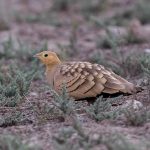It’s that time of year again. Sidewalks are speckled, cars are spattered. Flocks of Cedar Waxwings are buzzing everywhere, streaked juveniles mingling with creamy adults on their pilgrimages through the parks, gorging as they go. American Robins are coming up off the lawns to partake as well. In short, the berries are ripe, and I think it is worth knowing a bit more about them.
One of the princes among berries, especially if you are a Cedar ( or for that matter a Bohemian) Waxwing, is the moutain ash. I say “the” mountain ash, but I am actually speaking of a collective – over a hundred species (the exact number is contested) of short trees and large shrubs found in the genus Sorbus of the family Rosaceae. A few other odds and ends are sometimes covered by the common name mountain ash, but I will disregard them here. Indeed, I’m more strictly speaking of those species in the subgenus Sorbus, the ones known by the name rowan in European circles. Even if you don’t know the name, chances are that if you live in the temperate zones of the northern hemisphere you know it by sight. Though not the largest or longest-lived of trees, it is distinctive – pinnate leaves, dense clusters of white flowers in the spring, and most strikingly, the bright red-orange berries (actually pomes, to be strict) that ripen in the fall and linger, unless devoured, through the winter.
This is a tree much storied and sung of, with folk names like rune tree, witch wood, quickbeam, and even delight-of-the-eye. In Scotland you plant one by the door to ward off evil magic. On a more practical level, it makes a good walking stick (or magic wand, I suppose) and yes, extremely good food for birds — soft, juicy, palatable (to human tongues, more palatable) even after freezing and thawing. This is not sheer generosity on the mountain ash’s part. Waxwings in particular are wonderful about depositing these seeds, along with little mounds of fertilizer, wherever they go. Not so great for the seed when it lands on a sidewalk or car, but more than fine when it ends up in a park or stream-side. Greenough Park, for instance, would have no mountain ash at all were it not for the Waxwings and bringing seeds in their guts from elsewhere — at least, according to the writers of the helpful interpretive signs.
Is the partnership of food-for-disperal really so different than the partnership of magic-for-dispersal? You could argue that berries are subject to evolutionary pressure and legends are not, but it’s not out of the question that over the years the Scots have had preferences in their anti-witch trees. Are small or large, twisted or straight rowans more common in the parts of Europe where they sustain the most lore? Certainly, more modern folks have selected the most decorative trees, for they are commonly planted in schoolyards, parks, and lawns. From the rowan’s point of view, are we just another seed carrying mechanism?














In the neighbourhood of Bristol we have a major cente of diversity in Sorbus forms. From three ancestral European species a whole set of hybrids with each other, and of back-crosses to the parent forms, plus some crosses with introduced forms from China, has resulted in a us currently having 16 taxa in the Avon Gorge alone. They are all beautiful though, and make very good garden small trees.
Re: the title, I see what you did there. 🙂
I envy you for the waxwings, Carrie. And I am glad I chose birding over botany.
And I may have taken in some mountain ash berries with my apple wine, but am very positive I’ve never acted as a seed carrying mechanism.